How to Measure for an Overhead Crane’s Span and Runway Length
The better you understand the design and specification requirements for your own crane system, the better equipped you’ll be to compare the different quotes you receive against the project criteria.
Whether you’re thinking about adding a new overhead crane, or possibly replacing an existing crane in your production or manufacturing facility, it’s always a good idea to understand the basic design requirements and specifications of the project.
Having a clear understanding of the space available in your building, the existing building supports that the crane can be installed on, and any overhead obstructions, will help you lay out the design criteria and expectations for any crane manufacturer who bids on the project.
In some instances, you may have existing runways in your building. It’s possible you moved into a facility that previously had an overhead crane and the original support structure is still in place, and you’re adding a new crane, replacing an existing crane, or upgrading or modernizing a crane on an existing runway system.
Or, it’s entirely possible that this is a brand new overhead crane installation in a new construction facility or existing building structure.
Either way, you should familiarize yourself with the following measurements prior to meeting with an overhead crane manufacturer:
- Runway beam size
- Runway rail size
- Crane span
- Runway length and distance between runway supports
- Building clearances
The more information you can gather upfront, the more information the crane manufacturer will have to take back to their engineering team to put an accurate quote and project specification together.
Also, the better you understand the design and specification requirements for your own crane system, the better equipped you’ll be to compare the different quotes you receive against the project criteria.
What You’ll Need to Measure for an Overhead Crane Installation
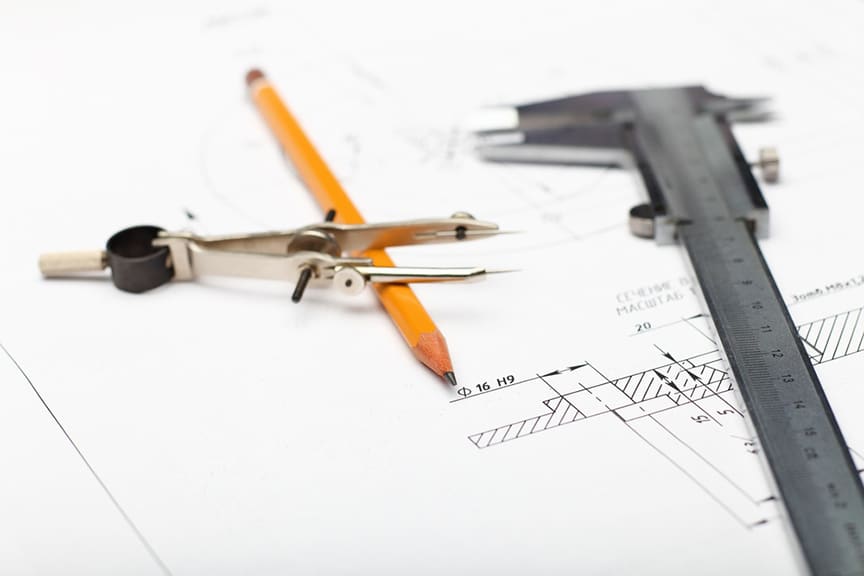
When you’re gathering your materials so you can start recording measurements, we recommend using the following tools:
- Tape Measure – A 25’ to 30’ foot tape measure is perfectly fine
- Laser pointer – An inexpensive one can be found at hardware or home improvement stores for $65-70. More expensive ones with longer ranges are typically $130-150.
- Notepad and pen or pencil
- Building plans or drawings
Measure the Crane’s Runway Beams
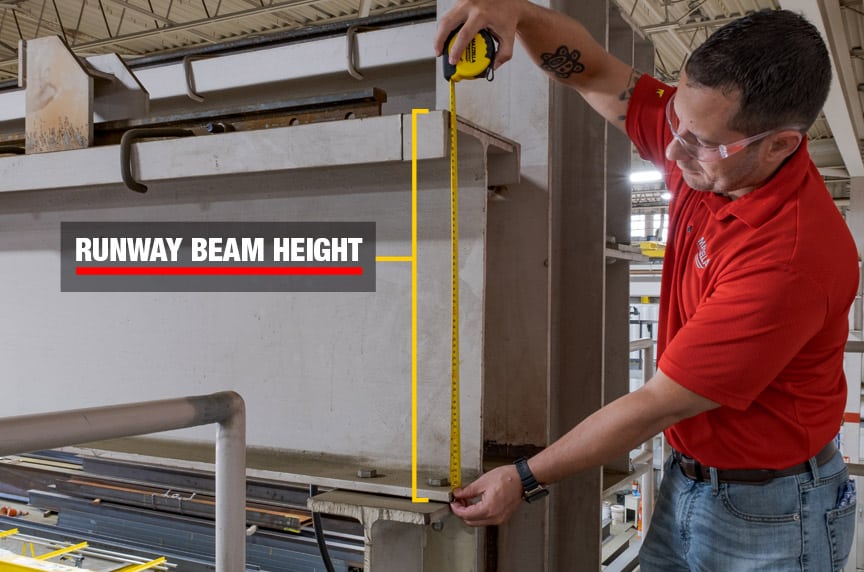
Ideally, you will have access to get closer to the runway beams using a lift or nearby mezzanine (if available). If not, you can gather a lot of these measurements using your tape measure or your laser pointer.
Getting measurements of the actual runway beam is as simple as running your tape measure from the bottom of the beam up to the top if you have easy access to the beam. If you can’t get to the beam, you can stand underneath it and use your laser pointer to get a measurement to the top flange, and then get a measurement to the bottom of the beam and subtract the difference. This will give you your beam height. If you’re able to get up close to the beam, you can measure the flange width, as well as the flange thickness.
If the runway beam has a cap channel added for extra reinforcement, getting measurements for the width of the flange, toe, and thickness of the cap will also help the engineering team understand the crane’s design requirements.
Measuring the Crane’s Rail Size
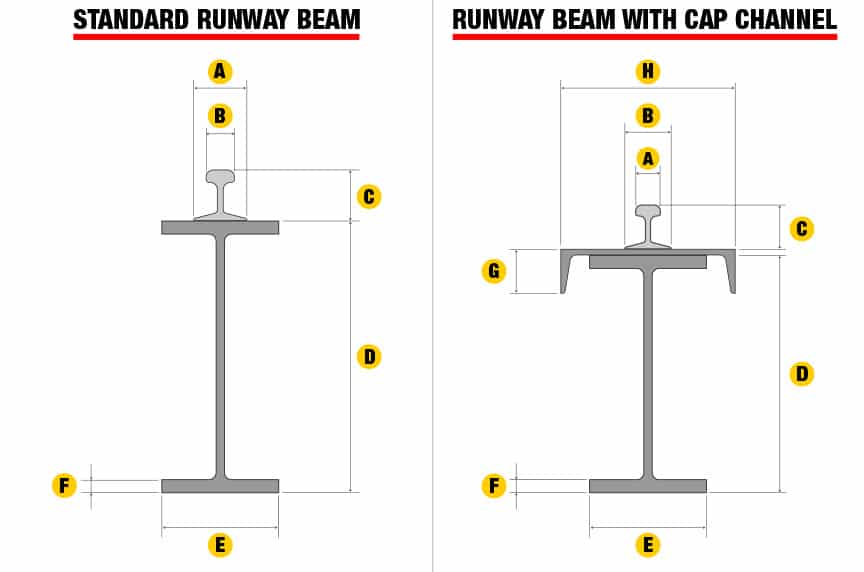
Making sure that you understand the size of the rails will allow you to properly size the wheels. The two most important measurements for the crane rails are the head width and the rail height. This allows the engineering team to identify the size of the rail and determine what size wheels should be used on the crane system. This is important for two reasons:
- You can match the size of the wheels to the size of the rails for proper alignment and tracking of the crane as it moves down the runway. This can help prevent premature or excessive wear of the rails and wheels, but also to the beams and structural supports themselves.
- A properly sized wheel will prevent design changes to the runway rail so the customer can still utilize the original structure in place. This can be a significant cost-savings to the customer if the runway beams and rails can be re-used.
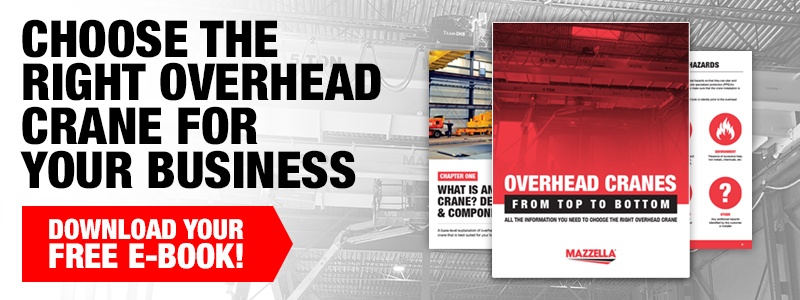
Measuring Crane Span Length
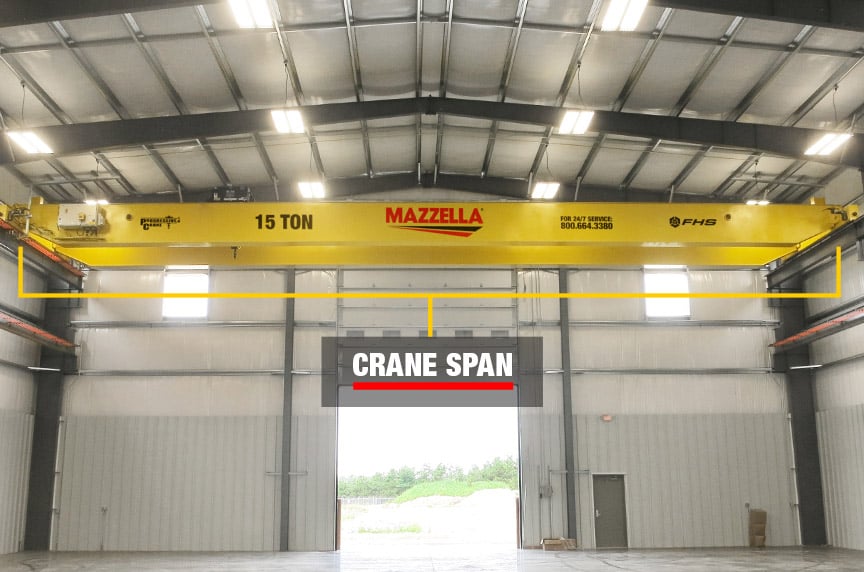
One of the most important measurements you can provide during an overhead crane consultation is the crane’s span. An overhead crane’s span is essentially its width across the bay—or the measured center-to-center distance between the runway beams. It’s important because it determines how much material is required to build the bridge girders and most significantly affects the cost of the overhead crane.
If your building already has a runway system in place, you can use your laser pointer and place it flush with the runway or building support that the runway is resting on and measure across to the next beam or support. You’ll want to make note of any cantilevers or haunches that the runway beam may be sitting on to determine how far off the building column the center line of the runway is.
During this step, you want to get measurements near the exact measurements to give the estimators and engineers enough information to put a quote together. However, if you move forward with the project, the approval drawings will provide the exact measurements required.
If you’re designing and installing a new crane in your existing facility, then you can use the existing building supports to measure the crane’s span. Take your laser pointer and measure the outer edge distance between parallel building columns. If you have building drawings, you can also use these as a reference or provide the crane manufacturer with a copy of the drawings for their reference.
Measuring the Crane’s Runway Length and Distance Between Supports
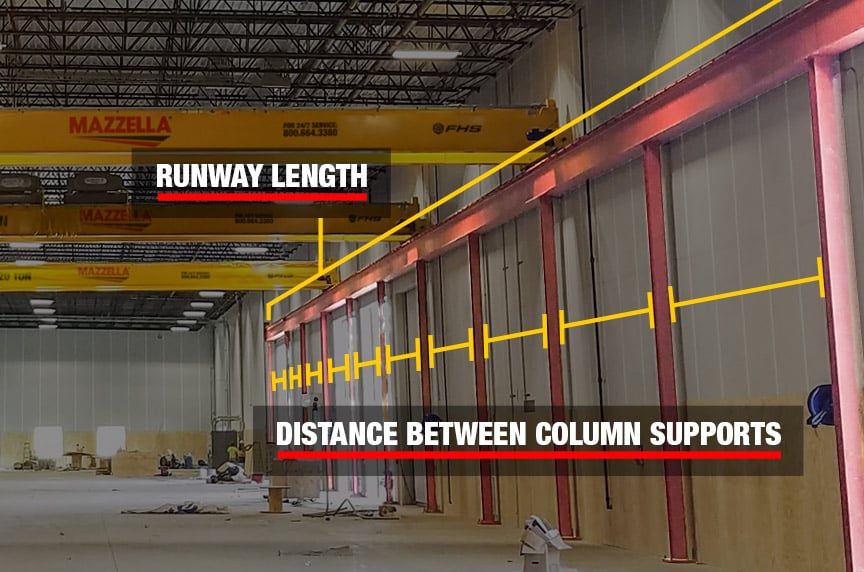
The length of the runway is the total overall distance that the crane will move through the facility. Measure out this rough length using the building’s specifications, the setup of your existing production area, or map out or mark off an area you want to be able to utilize for material handling and load movement.
You will also need to determine the measured distance between the building supports that the runway beam will run on top of. To do this, place your laser flush against a building support beam and measure down the length of the runway beam to the next support.
Identifying Obstructions and Measuring for Building Clearance
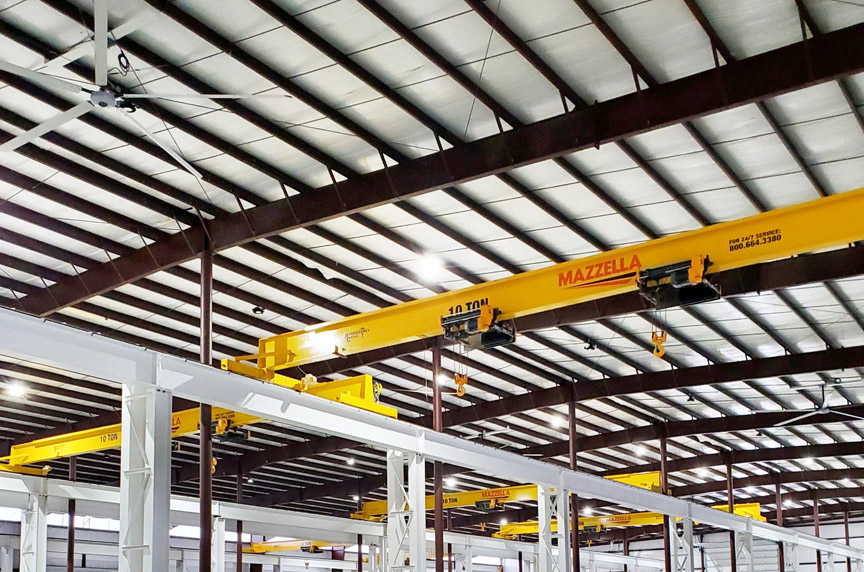
OSHA 1910.179(b)(6)(i) Overhead and Gantry Cranes states that, “a minimum clearance of 3” overhead and 2” laterally shall be provided and maintained between crane and obstructions in conformity with Crane Manufacturers of America, Inc., Specification No. 61.”
In layman’s terms, this means that when you design your overhead crane system, you must consider any type of overhead obstructions including:
- Water pipes
- Heating and cooling ducts
- Gas or electrical lines
- Overhead light fixtures
- Building headers
You’ll need to know if your crane is a top running or under running design. This will determine the maximum height of your crane system. A top running crane runs on top of the runway beams and will be closer to any overhead obstructions, while an under running crane hangs off of the bottom flange of the runway beam.
You’ll then need to determine how close your crane will be to any of the obstructions mentioned above by measuring from the top of the crane to the bottom of any possible obstruction—ensuring the overhead gap is at least 3” and your crane runway beams and supports are at least 2” from any possible lateral obstruction.
Overhead Crane Duty Cycle Determinations
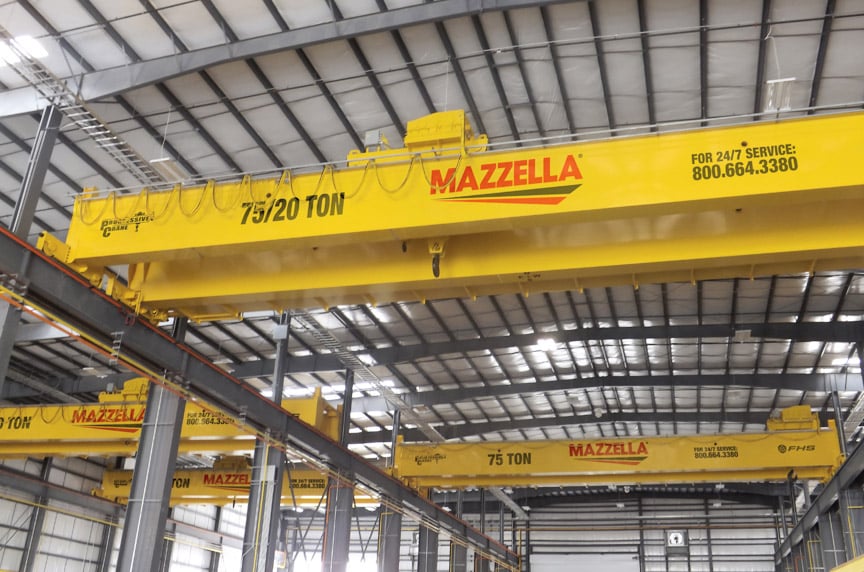
Selecting the right class and duty cycle for an overhead crane is critical for a customer who is trying to balance the initial investment of a crane system with the cost of future maintenance that will be required.
These four factors are the most important requirements that you should identify to make sure that your crane is specified for the correct duty cycle and classification:
- Rated Load – Estimation of the loads lifted at or near capacity
- Service – Total hours in operation per day
- Number of Lifts – Average lifts and trolley and bridge movements made each hour
- Distance – Average length of each movement
Crane service classifications allow you to select and build an overhead crane that is the most economical and safest design for your lifting application. Selecting the right duty cycle or service classification of an overhead crane helps ensure that the components of the overhead crane are durable enough to withstand the load and usage requirements.
Two cranes with an equal capacity and span could vary in price as much as $100,000 because high duty cycle cranes (Class D, E, or F) require specialized components like the hoist, end trucks, motor, bearings, and controls. Low duty cycle cranes can get away with more standardized and economical components—resulting in significant cost savings.
When designing an overhead crane, you’ll also want to give special consideration to any future usage requirements. If you think that your production may expand down the road which may result in higher capacity lifts or an increase in the number of lifts per day, then you may want to spec out the crane and components so it can accommodate your future growth.
Wrapping it Up
While a crane manufacturer will come in to your facility and gather all of the information that they need to put a proper quote and specification together, it’s also a good idea for you as the consumer to be informed about the design and specification requirements for your new overhead crane. Understanding how a new crane will fit into your existing facility, or how the structural and design factors of an existing runway and support structure can be utilized, will help you double-check their bids.
The better informed you are as a customer, the smoother the design, consultation, and quotation processes will be. Knowing the specifications and requirements for your crane system gives you more power and knowledge you can use to make an informed purchasing decision. The more informed you are, the easier it will be to select a manufacturer that will provide you with a crane system that is a long-term, safe, and efficient solution.
At Mazzella, we have over 50 years of experience engineering and building custom solutions. We partner with customers who have all types of experience in designing specifications for an overhead crane and we can build anything from light-duty economical cranes to large-capacity, high-duty cycle cranes.
We welcome the opportunity to address your overhead material handling needs—if you’d like to schedule a consultation on your next project, contact us to speak with a Crane Specialist.

Copyright 2018. Mazzella Companies.
